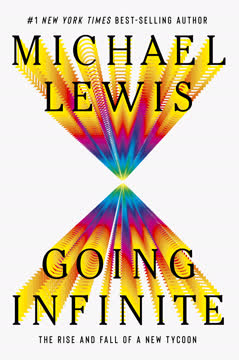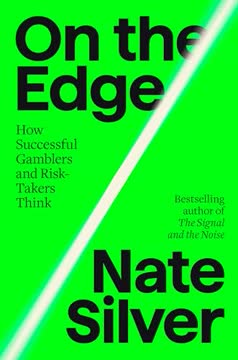Key Takeaways
1. Black Swans: Unpredictable events with extreme impact
"A Black Swan is something totally off the grid, something that defies all previously known categories and assumptions."
Taleb's Black Swan theory challenges conventional thinking about risk and probability. Black Swans are:
- Rare, unpredictable events with extreme impact
- Only explainable in hindsight
- Often dismissed or rationalized after the fact
Examples of Black Swans:
- The 9/11 terrorist attacks
- The 2008 financial crisis
- The COVID-19 pandemic
Implications for decision-making:
- Recognize the limitations of forecasting and risk models
- Prepare for the unexpected rather than trying to predict specific events
- Focus on building robustness and antifragility in systems and strategies
2. Tail risk hedging: Profiting from market crashes
"If you blinked you missed it," Spitznagel recalled.
Universa's strategy involves:
- Purchasing cheap, out-of-the-money put options
- Accepting small, regular losses during normal market conditions
- Profiting enormously during rare market crashes
Key aspects of the approach:
- Asymmetric payoff structure
- Focus on explosive upside potential
- Patience and discipline in maintaining the strategy
Benefits for investors:
- Protection against catastrophic losses
- Ability to maintain higher exposure to risky assets
- Improved long-term returns through better risk management
3. The precautionary principle: Avoiding catastrophic risks
"If an action or policy has a suspected risk of causing severe harm to the public domain (affecting general health or the environment globally), the action should not be taken in the absence of scientific near-certainty about its safety."
Key aspects of the precautionary principle:
- Applies to potentially catastrophic, irreversible risks
- Shifts burden of proof to those proposing potentially harmful actions
- Emphasizes caution in the face of uncertainty
Applications:
- Genetic modification of organisms (GMOs)
- Climate change mitigation
- Emerging technologies with unknown long-term effects
Criticisms and limitations:
- Can potentially stifle innovation and progress
- Difficulty in defining thresholds for action
- Balancing precaution with other societal needs and goals
4. Complexity and systemic risk in the modern world
"Civilization is very vulnerable," he warned.
Increasing interconnectedness leads to:
- Greater potential for cascading failures
- Difficulty in predicting and managing risks
- Emergence of new, unforeseen threats
Examples of systemic risks:
- Financial contagion
- Cybersecurity threats
- Supply chain disruptions
Strategies for managing complexity:
- Building redundancy and diversity into systems
- Focusing on local resilience and decentralization
- Developing adaptive, flexible response capabilities
5. Climate change: A looming existential threat
"Push a complex system too far and it will not come back."
Key aspects of the climate crisis:
- Potentially irreversible tipping points
- Widespread, interconnected impacts on ecosystems and human societies
- Urgent need for rapid, large-scale action
Challenges in addressing climate change:
- Political and economic inertia
- Uncertainty about specific impacts and timelines
- Difficulty in coordinating global action
Potential solutions and adaptations:
- Rapid transition to clean energy sources
- Carbon capture and removal technologies
- Redesigning cities and infrastructure for resilience
6. Rethinking risk management in finance and beyond
"We have demonstrated mathematically that there is significant advance warning to provide a clear indicator of an impending crash."
Traditional risk management often falls short due to:
- Overreliance on historical data and normal distributions
- Failure to account for extreme events and fat tails
- Misalignment of incentives and lack of skin in the game
New approaches to risk management:
- Stress testing for extreme scenarios
- Focusing on robustness and antifragility
- Incorporating complex systems thinking
Implications for policy and regulation:
- Need for more dynamic, adaptive regulatory frameworks
- Importance of addressing systemic risks at a macro level
- Rethinking capital requirements and risk models for financial institutions
7. The limits of prediction and the importance of robustness
"Prediction tells you that something is going to happen, and that can be helpful so you can run away from it if you need to. But much better is understanding why it happens—that can enable us to take action that may prevent things."
Challenges of prediction in complex systems:
- Nonlinear relationships and feedback loops
- Sensitivity to initial conditions (butterfly effect)
- Emergence of novel, unforeseen phenomena
Strategies for dealing with unpredictability:
- Building redundancy and slack into systems
- Maintaining flexibility and adaptability
- Focusing on general preparedness rather than specific scenarios
The value of robustness:
- Ability to withstand shocks and perturbations
- Reduced vulnerability to specific predictions or models
- Improved long-term survival and performance in uncertain environments
8. Skin in the game: Aligning incentives with risk
"The Bob Rubin trade."
Importance of skin in the game:
- Ensures decision-makers bear the consequences of their actions
- Reduces moral hazard and misaligned incentives
- Promotes more responsible risk-taking and long-term thinking
Examples of lack of skin in the game:
- Bank executives receiving bonuses despite institutional failures
- Politicians making decisions without personal consequences
- Corporate leaders prioritizing short-term gains over long-term stability
Implementing skin in the game:
- Redesigning compensation structures to align with long-term outcomes
- Increasing personal liability for decision-makers in high-risk situations
- Promoting transparency and accountability in risk-taking
9. The fallacy of modern portfolio theory
"The entire asset allocation industry is an empty narrative," he said.
Criticisms of modern portfolio theory (MPT):
- Assumes normal distributions and efficient markets
- Fails to account for extreme events and fat tails
- Overemphasizes diversification at the expense of robustness
Alternative approaches:
- Barbell strategy (combining very safe and very risky investments)
- Tail risk hedging
- Value investing focused on margin of safety
Implications for investors:
- Need to reassess risk management strategies
- Importance of considering worst-case scenarios
- Potential benefits of more dynamic, adaptive portfolio management
10. Antifragility: Thriving in uncertainty
"Some things benefit from shocks; they thrive and grow when exposed to volatility, randomness, disorder, and stressors and love adventure, risk, and uncertainty."
Key aspects of antifragility:
- Goes beyond robustness (ability to resist shocks)
- Actually improves and gets stronger from disorder and stress
- Embraces volatility and uncertainty as opportunities for growth
Examples of antifragile systems:
- Evolution and natural selection
- Free markets and entrepreneurship
- Immune systems
Cultivating antifragility:
- Building in redundancy and overcompensation
- Embracing trial and error and learning from failures
- Maintaining optionality and flexibility in decision-making
Last updated:
FAQ
What's Chaos Kings about?
- Focus on Traders: Chaos Kings by Scott Patterson examines the lives and strategies of Wall Street traders who excel in chaotic market conditions, such as Bill Ackman and Mark Spitznagel.
- Risk and Chaos: The book emphasizes understanding risk, particularly "Black Swans," which are unpredictable events with massive impacts, and how traders embrace chaos to find opportunities.
- Real-Life Examples: It provides detailed accounts of traders' strategies during events like the COVID-19 pandemic and the 2008 financial crisis, offering insights into contrarian investing.
Why should I read Chaos Kings?
- Market Analysis: The book offers a unique perspective on market dynamics and the psychology of traders who thrive in uncertainty, providing valuable insights for navigating turbulent financial markets.
- Engaging Storytelling: Scott Patterson combines thrilling narratives with in-depth analysis, making complex financial concepts accessible and engaging through real trader stories.
- Timely Lessons: In an era of volatility, the lessons from Chaos Kings are relevant for investors and anyone interested in risk management in finance.
What are the key takeaways of Chaos Kings?
- Embrace Chaos: Successful traders view chaos and uncertainty as opportunities, allowing them to capitalize on market inefficiencies.
- Exponential Risk: Understanding exponential risks, as illustrated by Bill Ackman's early COVID-19 warnings, helps investors anticipate potential crises.
- Long-Term Perspective: Traders emphasize long-term investment strategies to weather market storms and emerge profitable despite short-term volatility.
What is a "Black Swan" as defined in Chaos Kings?
- Unpredictable Events: A "Black Swan" is an event that is highly improbable and has massive consequences, like the 2008 financial crisis or the COVID-19 pandemic.
- Market Impact: These events can disrupt financial markets, creating opportunities for prepared traders. Understanding them is crucial for risk management.
- Contrarian Strategy: Traders like Nassim Taleb advocate for strategies that account for Black Swans, emphasizing protective measures against unforeseen risks.
Who are the main traders featured in Chaos Kings?
- Bill Ackman: Known for bold bets during crises, Ackman's strategies during the COVID-19 pandemic highlight his understanding of exponential risk.
- Mark Spitznagel: Founder of Universa Investments, Spitznagel is known for his "Black Swan Protection Protocol," thriving on market volatility.
- Nassim Taleb: Although not a traditional trader, Taleb's philosophies on risk and uncertainty heavily influence the strategies discussed in the book.
What is the "Black Swan Protection Protocol"?
- Tail Risk Hedging: This strategy protects investors from extreme market downturns by purchasing far-out-of-the-money put options, allowing profits during crashes.
- Long-Term Commitment: It requires a long-term commitment, as it may involve losses during stable periods, but offers explosive gains during crashes.
- Universa's Approach: Universa Investments employs this protocol to protect against significant market declines, demonstrating its effectiveness in past crises.
What is the Precautionary Principle as discussed in Chaos Kings?
- Principle Definition: The Precautionary Principle suggests avoiding actions with suspected severe risks in the absence of scientific certainty about their safety.
- Financial Application: In finance, it advises against actions that could lead to catastrophic losses, aligning with Spitznagel and Taleb's trading strategies.
- Contrast with Traditional Approaches: The principle contrasts with conventional risk management, advocating for a more cautious investment approach.
What are Dragon Kings and how do they differ from Black Swans?
- Definition of Dragon Kings: Dragon Kings are extreme events that are predictable based on certain indicators, unlike inherently unpredictable Black Swans.
- Predictability Factor: Recognizing patterns can help identify potential Dragon Kings, allowing traders to prepare for these events.
- Real-World Examples: Examples include significant market crashes that can be anticipated through analysis, enhancing risk management strategies.
How does Chaos Kings critique Modern Portfolio Theory (MPT)?
- Limitations of MPT: The book argues that MPT's reliance on diversification often fails to protect against extreme market events.
- Alternative Strategies: Spitznagel promotes risk mitigation over mere diversification, aiming to enhance portfolio resilience during downturns.
- Real-World Evidence: Examples show how MPT has misled investors during crises, encouraging a rethink of conventional investment wisdom.
What are the best quotes from Chaos Kings and what do they mean?
- “Panic early.”: This quote emphasizes the importance of recognizing potential threats before they escalate into crises, advocating for proactive risk management.
- “Survival is essential.”: It highlights the fundamental goal of risk management—protecting capital to ensure long-term success.
- “Ruin is forever.”: This serves as a warning against underestimating the potential consequences of high-risk actions, emphasizing the need for caution.
How does Chaos Kings relate to current global events?
- Connection to Crises: The book draws parallels between its strategies and recent global events, like the COVID-19 pandemic, highlighting the relevance of risk management.
- Implications for Investors: Understanding lessons from Chaos Kings can help investors navigate modern market complexities, especially during uncertainty.
- Broader Impact: The themes extend beyond finance, addressing issues like climate change and political instability, encouraging consideration of these challenges in investment strategies.
How do the concepts in Chaos Kings apply to personal investing?
- Risk Management: The book emphasizes understanding and managing risk in personal investment strategies, advocating for a contrarian mindset.
- Long-Term Perspective: A long-term investment strategy helps individuals weather market fluctuations and capitalize on downturn opportunities.
- Embracing Uncertainty: Personal investors can learn to view uncertainty and volatility as opportunities, making informed decisions using principles from Chaos Kings.
Review Summary
Chaos Kings receives mixed reviews, with praise for its exploration of financial chaos strategies and profiles of key figures like Taleb and Spitznagel. Readers appreciate the insights into hedge fund tactics and market crashes. However, some criticize the book's structure, finding the climate change sections disconnected from the main narrative. Many reviewers note similarities to Michael Lewis's style. Overall, the book is viewed as informative but occasionally repetitive, with strong early chapters and a weaker latter half.
Similar Books










Download PDF
Download EPUB
.epub digital book format is ideal for reading ebooks on phones, tablets, and e-readers.





